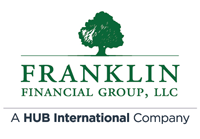 Many young employees from Gen Z are taking to TikTok to express their frustration about the workplace and profess their practice of quiet quitting. Essentially, they are remaining at their jobs and still receiving paychecks and benefits, but they are sticking strictly to their the job descriptions and maintaining precise schedules.
Many young employees from Gen Z are taking to TikTok to express their frustration about the workplace and profess their practice of quiet quitting. Essentially, they are remaining at their jobs and still receiving paychecks and benefits, but they are sticking strictly to their the job descriptions and maintaining precise schedules.
On social media, some are bragging about doing the bare minimum because of their disappointment in their employer or simply as a lifestyle choice. Some older workers are suggesting this is a result of laziness or lack of ambition. Many in Gen Z argue that they are simply doing what is expected of them contractually, and nothing more, to maintain work-life balance.
The Phenomenon of Quiet Quitting
More than 3.9 million TikTok posts (and presumably counting) have addressed this phenomenon. Many explain that quiet quitting is really about setting boundaries and improving work-life balance or fighting the proverbial man.
“You’re not quiet quitting,” says Claudia Alick in a TikTok video. “You’re just resisting being stolen from. Unfortunately, that’s how capitalism works. That’s how they make a profit. The profit comes from you not getting paid your full value.”
But some career experts and even other TikTok users suggest that young employees are playing with fire. By never going above and beyond, they are making themselves vulnerable to layoffs at a time when budget is a concern. In addition, they might rule themselves out of promotions down the road.
Emily Smith, a TikTok user, reminds people that their boss might not know all their tasks or how long it takes for them to get everything done. She suggests having a conversation about what to prioritize and how to spread out the deadlines is a better route than quiet quitting. Others suggest this practice is bad news for employers.
“Experts say any lack of motivation among a company’s youngest workers can become a troubling sign. ‘Organizations are dependent on employees doing more than a minimum,'” says Mark Royal, senior director for Korn Ferry Advisory, according to a Korn Ferry blog.
What Should HR Do?
HR leaders should investigate the phenomenon of quiet quitting to determine whether it is happening at their organization. After all, a lack of employee engagement is top of mind in Human Resources. Thirty percent of those who responded to the latest State of HR report said employee engagement and experience is their top priority.
The pandemic forced people to rethink their lifestyle and reprioritize work. For many, family, friends, and personal pursuits have replaced work in the top spot. Some say that quiet quitting is the new checking out. Regardless, the Great Resignation has shown that employers, who do not take these shifts in culture seriously, will pay in a loss of talent.
At the same time, the top consequence of the pandemic, according to the respondents of State of HR, was burnout. That may be why TikTok users are leading the charge to demand better working conditions. Certainly, HR leaders are responding with different benefits, such as unlimited PTO and zen rooms, and policies like devising rules that limit calls and emails outside of work hours.
Even Goldman Sachs, famous for its 100-hour work weeks for associates, is requiring employees to take paid time off. Salesforce is testing work weeks with no meetings. Others are experimenting with four-day work weeks, flexibility in when and where employees work, and company-wide vacation days. This experimentation is part of the transformation of work that everyone is witnessing post pandemic.
The question becomes whether quiet quitting is an afront to employers that will degrade their ability to serve customers and innovate or is simply a new way of working that puts people’s personal lives and wellbeing above everything else. Perhaps, this is just part of the cultural shift and workplace transformation the country has been experiencing since the start of the pandemic.
By Francesca Di Meglio
Originally posted on HR Exchange Network
